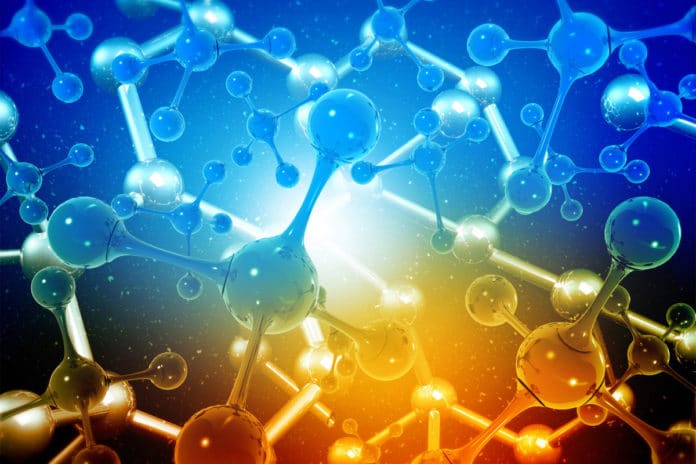Usually, NMR spectroscopy is used to determine small molecules in biological samples such as blood and urine. It is a powerful diagnostic tool for medical professionals to help them identify biomarkers of specific diseases and disorders.
But, this technique has its limitations, especially when scientists need to distinguish particles that haven’t been cataloged already — that is, by far most of them.
To make this complicated and time-consuming process a lot simpler, a trio of doctors and scientists from Brigham and Women’s Hospital and Harvard Medical School created a new algorithm for decoding signals from NMR readings that draws from both quantum computing and classical machine learning.
Scientists figured that since the basics of NMR, short for Nuclear Magnetic Resonance, is grounded in quantum mechanics, then maybe a quantum computer could help push the technique beyond the current limits set by utilizing ordinary computer processors to decipher the data.
The algorithm reduces the process that takes several days by classical computers into several minutes. As it uses only 50 to 100 quantum bits or qubits, the algorithm works on both quantum computers that already exist and the so-called “near-term” quantum computers now being developed.
Eugene Demler, professor of physics and one of the paper’s co-authors, said, “We should not just think of applications for perfect quantum computers. We should think of applications of quantum computers for the near future. It’s important to realize that we can use these non-perfect computers — these noisy, intermediate-scale quantum computers — to study already what’s important for biomedical research.”
Currently, the algorithm is in the proof-of-concept stage, but it has paved the way towards possibilities in chemical, medical, and biological research using NMR.
Paper co-author Samia Mora, an associate professor of medicine at the Medical School and a cardiovascular medicine specialist at the Brigham, said, “Take blood, for example. We know there are thousands of molecules in the bloodstream, but right now, with NMR, we probably only measure about 200 [of them]. In the future, ideally, we would be able to expand this algorithm to be able to solve for this problem of what are these molecules in the bloodstream beyond the ones that we already know.”
“Having a better understanding of the molecular signatures of diseases or treatments is very impactful for many areas across many, many different disciplines.”
Scientists also wanted to crack at a problem that has real-world applications, is hard for classical computers yet could be solved using existing and near-term quantum computers. Quantum-assisted NMR spectroscopy checked all the boxes since the readings, called a spectrogram, are put together by measuring a complex set of quantum spins.
For example, to get a spectrogram, biological samples are placed inside a machine that has a magnetic field and is then bombarded with radio waves to excite the nuclear magnetic properties in the molecules. The NMR machine reads those spins as different signatures.
The recorded spectrogram, in any case, contains roundabout data about the molecular structures, making investigating and distinguishing those molecules a complex pattern-recognition problem. If the patterns aren’t recognized or previously known, it can take days or long periods of experimentation to put together an answer, since normal computers must make those computations one at a time.
Using a quantum system takes advantage of its ability to access and calculate faster. It makes use of a mathematical construct known as Hilbert space and the higher processing power of qubits. One qubit can be two traditional values at once; a pair can be four, and so on. The problem with the current or intermediate quantum computers, though, is that all that computing power accumulates a lot of noise, making the whole calculation inaccurate.
Hybrid algorithms can effectively solve this. In this study, scientists described that the hybrid algorithm uses classical statistical methods, like Bayesian machine learning, to cluster and refine the search to correct for errors brought on by the quantum part of the algorithm, leading to the correct molecule.
Dries Sels, Demler’s postdoctoral fellow and the lead author of the study, said, “There are three parts to the paper. All three ingredients are necessary because if you leave out the first part where we restrict ourselves to these clusters of physical molecules, then basically, you’ll start in some place someplace away from where you actually want that you’ll be searching for it forever. And then in the last part, the same thing: If you don’t do it cleverly, then the noise levels of your quantum computer will be so high, they’ll just be going in circles — you’ll be randomly searching.”
In future research, scientists want to expand the algorithm’s capability. They also believe the algorithm can be extended to solve for other types of spectroscopic analysis using existing quantum computers.
Sels said, “It probably took us 20 or so years to get to the current stage of development of quantum computing hardware. The road ahead to quantum computers that can do error correction and are good enough to be plug-and-play devices is presumably equally as long. If we don’t have applications for these intermediate or current state-of-the-art machines, then we might face a quantum winter.”
Journal Reference:
- Sels, D., Dashti, H., Mora, S. et al. Quantum approximate Bayesian computation for NMR model inference. Nat Mach Intell 2, 396–402 (2020). DOI: 10.1038/s42256-020-0198-x
